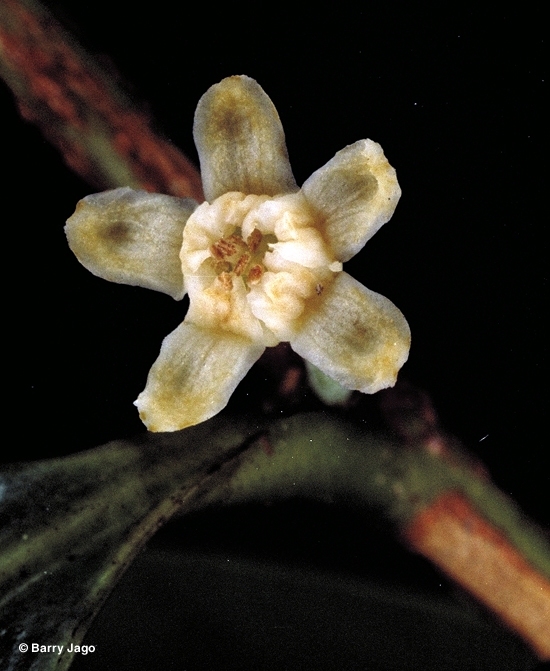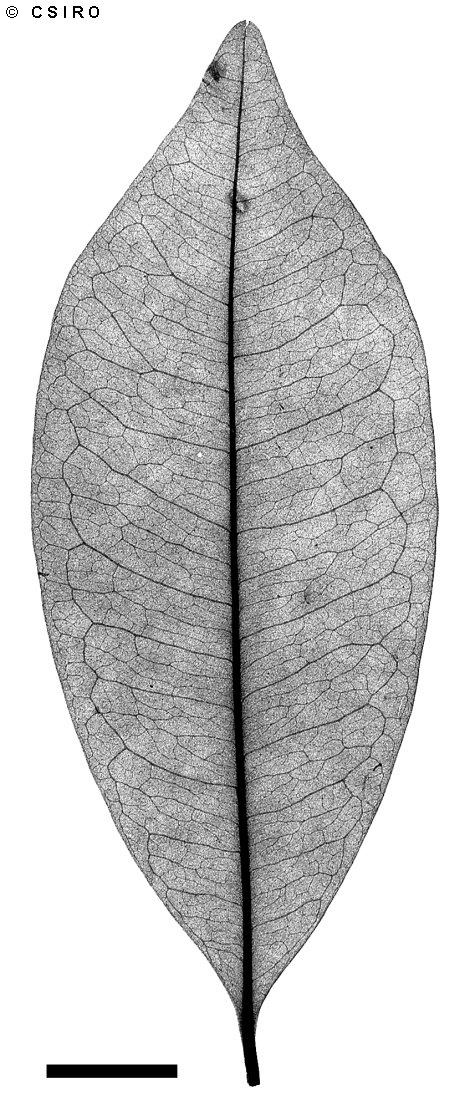Australian Tropical Rainforest Plants - Online edition
Erythroxylum sp. Brewer LA (B.Hyland 13373)
Click/tap on images to enlarge

Flower. © Barry Jago

Fruit, side views, cross section and seed. © W. T. Cooper

Scale bar 10mm. © CSIRO

Cotyledon stage, Epigeal germination. © CSIRO

10th leaf stage. © CSIRO
Family
Provisional HISPID phrase name.
Common name
Cooktown Kerosenewood; Kerosenewood; Brown Plum; Plum, Brown
Stem
Dead bark layered.
Leaves
Flowers
Fruit
Fruits +/- ellipsoid, about 11-15 mm long.
Seedlings
Distribution and Ecology
Natural History & Notes
Fruit eaten by Fruit Pigeons. Cooper & Cooper (1994).
The name Erythroxylum ecarinatum Hochr. has previously been misapplied to Australian material of this species.
Synonyms
Erythroxylum nottii J.Clarkson MS. Erythroxylum ecarinatum Hochr., Plantae Bogorienses Exsiccatae : 79(1904), Type: Originaire de lile dAmboine dans les Indes neerlandaises. Erythroxylum ecarinatum Burck, Ann. Jard. Bot. Btzg 11: 191(1893).
RFK Code
405
Copyright © CSIRO 2020, all rights reserved.

Web edition hosted at https://apps.lucidcentral.org/rainforest




